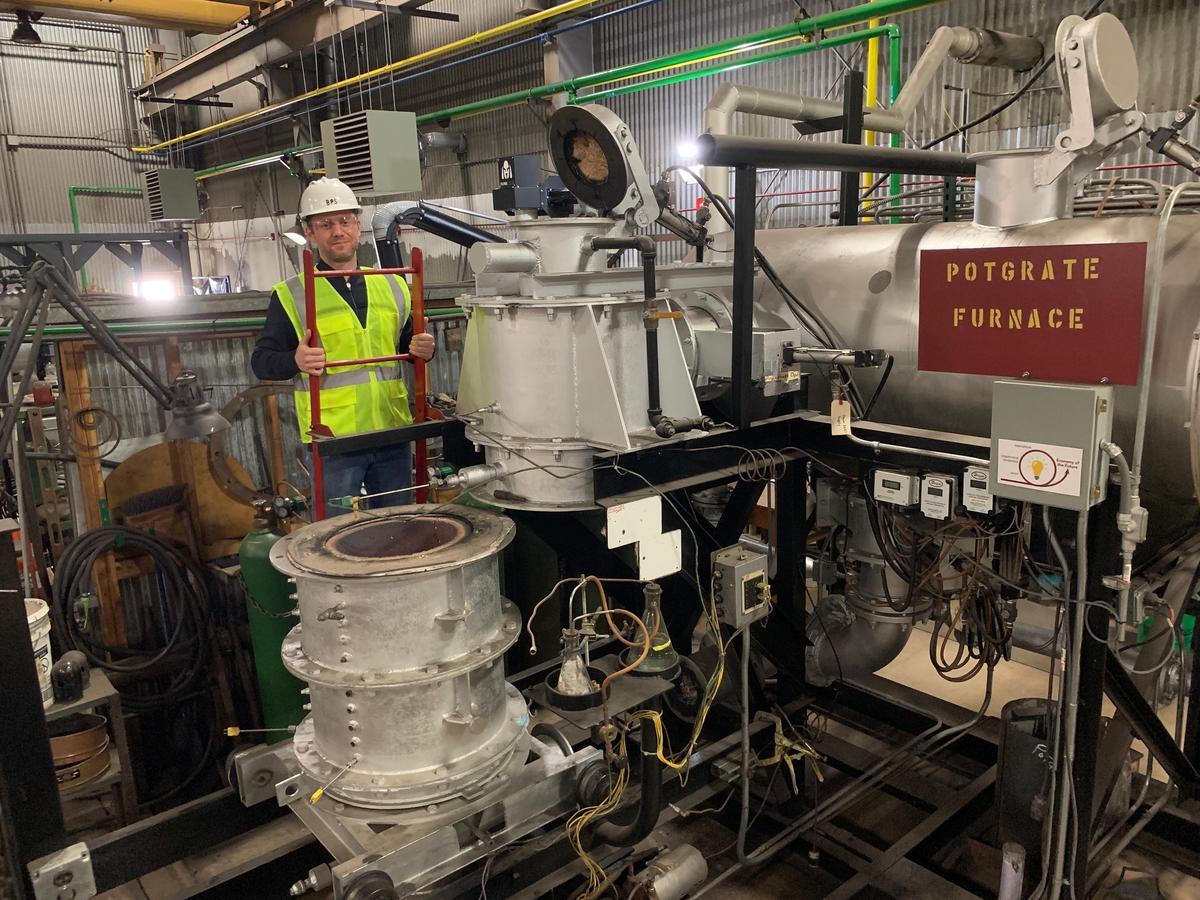Funding from the U.S. Department of Energy kicked an idling NRRI project into full steam ahead. With $2.1 million from the DOE’s Office of Energy Efficiency and Renewable Energy and matching funds of $530,000 from NRRI that leverages previous state appropriations, NRRI metallurgical engineers can research and improve the direct reduced iron process for Minnesota ores.
In the year since NRRI announced the grant, substantial progress has been made, according to Brett Spigarelli, NRRI metallurgical engineer. Key pieces of equipment have been onboarded and iron pellet samples collected from companies around the world.

“We have a new optical emission spectroscopy unit to analyze metallic iron. That’s a big deal for us,” said Spigarelli. “It used to take us a day to complete the analysis, but now we can do it in 10 minutes.”
The Coleraine Lab has also expanded ISO metallurgical testing capabilities and is now able to complete every test required by the iron ore and steel industry.
With the commercial pellet samples onsite, work is underway to characterize the mineral, chemical, physical and metallurgical compositions of the pellets so the researchers know exactly what’s in each pellet.
“We’re working hard to fully characterize all of them, because we can use that information to build a better, enhanced pellet,” said Spigarelli.
The goal of the DOE funding is to utilize Minnesota iron ore to produce alternative iron products for the steel industry that will enhance the overall productivity and energy efficiency of the steelmaking process.
To achieve this, NRRI will enhance the high temperature properties of Minnesota blast furnace grade iron ore pellets so they can be employed by the shaft furnace direct reduction process to produce an “enhanced” DRI product. The “enhanced” DRI will then be smelted to produce iron nodules or pig iron for direct charging to the electric arc furnace. This combination of technologies will provide the necessary virgin metallic iron to meet electric arc furnace metallurgical requirements and improve overall steelmaking efficiencies while maintaining a strong iron ore production industry in the U.S.
With the characterization wrapping up, NRRI researchers are launching into unique testing capabilities to mimic the DRI reduction process by removing the oxygen and adding carbon, completing the direct reduced iron process.
“A lot of metallurgical labs can reduce the iron ore, but they don’t have the capabilities to add carbon,” said Spigarelli. “That’s a big-step capability that we’ve added over the last couple of years.”
Direct reduced iron pellets are needed by the growing electric arc furnace steel industry which now make up 70 percent of the steel market in the Unites States. This DOE funding is intended to advance production of DRI and pig iron from Minnesota resources for this growing steel market while also reducing greenhouse gases.
An important aspect of the program is developing a unique Direct Reduced Iron Simulator, which will scale up simulation processes from the 500 to 1,000-gram scale to 10,000-gram scale, an intermediate step between lab and pilot scale. The unit was designed by Gradient Technologies in Elk River, Minn., and thermal modeling of the induction furnace was carried out by Ajax Tocco Magnethermic Corporation out of Warren, Ohio.
The DRI Simulator will give the iron and steel industry a more representative understanding of how manipulating feedstock and process parameters will impact the process performance and product quality at the semi-pilot scale.
“This will drastically reduce the risk associated with making any changes to the process at the commercial scale,” added Spigarelli. “It will be a critical tool for industry as we transition to higher value iron products.”
Ultimately, the goal of these efforts is to grow Minnesota’s capability to produce higher value iron products and keep Iron Range industries productive and relevant to the steel manufacturers.
Associated Staff
